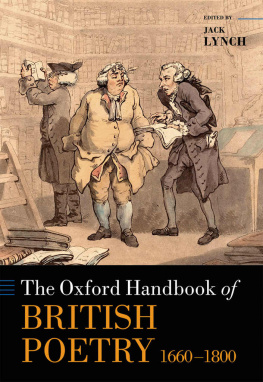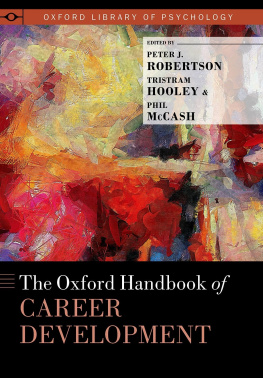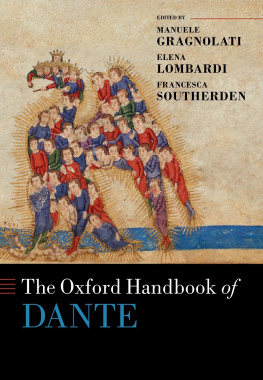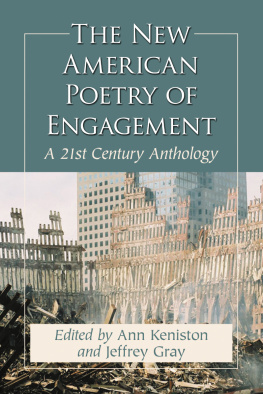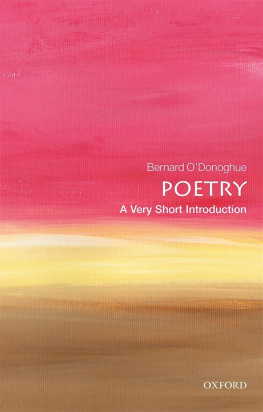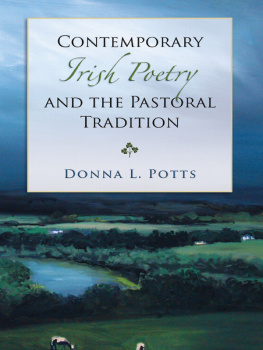The Oxford Handbook of Contemporary British and Irish Poetry
Introduction: The Limits and Openness of the Contemporary
I
There is one thing to be said for contemporary poetry that cant be said of any other, T. S. Eliot averred in a piece of film footage, and that is that it is written by our contemporaries. He prefaces this with a reminiscence of the argument in his 1919 essay Tradition and the Individual Talent, saying that it is no more use trying to be traditional than it is trying to be original. And this must be true too of trying to be contemporary. Il faut tre absolument moderne, Arthur Rimbaud wrote in 1873, but, doubtless, it would be a mistake to try and be that too. Yet while it may be foolish to attempt to be traditional or original or modern or contemporary, finding that your work is, or cant help being, a combination of these things may produce puzzling states of affairs, not least because you cant, strictly speaking, have either willed it, or fully intended the exact combination of qualities that it manifests. The limits and openness of the contemporary mean that it is always also a terra incognita into which we cant but stray, and in which we are forever attempting to take our bearings or draw a mapmetaphors for the activity of reading, interpreting, and understanding poetry that have been used before. The Oxford Handbook of Contemporary British and Irish Poetry is a collaborative effort at sketching a map of the always partially unknown.
(p. 2) Eliots observation about contemporary poetry should not be mistaken for his damning of it with faint praise. After all, when he spoke, he was alive and a poet himself. Rather it is suggesting that if you are interested in past poetry, if you read Rimbaud or Eliot, for example, then really to understand them now you might also have to take a look at contemporary poetry, for, according to Eliots own theory, the significance of past works is forever being altered by the addition of works in the present which retain value for those who read in the future. Poetry, and literature as a whole, is, in this sense, either a living processor on the way to becoming an inert exhibit in a lost-world museum. So his one thing to be said in favour of contemporary poetry, that our contemporaries write it, may, implicitly, not be the only thing to be said for it. Contemporary poetry is essential to the continuing life of poetry and literature. Even the poetry of dead languages requires the existence of living languages to have its value and significance. But how does the poetic-looking writing being produced by people living now reach the category, by no means a neutral one, of contemporary poetry and what, precisely, do the geographical and political adjectives in the title of this Handbook add to the aesthetic and cultural distinctions that it appears explicitly to make? When did what is currently considered the contemporary begin? When does recent poetry stop being contemporary?
Though a majority of the poets whose work is referred to and discussed in the following chapters are alive as I write, they are joined by poets from the generations of the living who died, as we say, before their time, and, in living memory, by the parental and grandparental generations of those still living. For a person of my age (b. 1953), this will take us back to poets born in the 1880s, thats to say the generation of Marianne Moore and T. S. Eliotthough even this notion ought to be flexible enough to include those who had children later in life, allowing for the presence of poets born in the 1860s, such as Charlotte Mew and W. B. Yeats, and the 1870s, such as Wallace Stevens. And, at a stretch, a case might still be made for the contemporaneity of the long-living Thomas Hardy, born in 1840, a great-grandparental figure whose poetry was being published alongside that of the generation of my grandparents, and whose poetic significance emerged as something of a polemical issue during the 1960s and 1970s, decades in which the youngest poets whose work is discussed here were being born. These presences, and ones from further back in history too, may also be considered part of the contemporary, because the present is also shaped by poetry from the recent or more remote past freshly brought to bear as significant within it, and especially by present acts of revival that invite contemporaries to look again at the poetry ofamong poets recently brought back into printKenneth Allott, Hope Mirrlees, Lynette Roberts, Bernard Spencer, A. S. J. Tessimond, and Sylvia Townsend Warner.
So to put some parenthetical dates into the chronology of this Handbook , it might be proposed that since the oldest living contemporary poets, those such as Mairi MacInnes (b. 1925), were born midway through the decade of the 1920s, and were thus beginning to publish visibly some thirty years later, the word contemporary here refers to poetry published over the last approximately sixty years. However, those (p. 3) poets, some of them born when Hardy was still to publish his final collection, Winter Words (1928), lived and worked through years in which the generation of my grandparents were very much alive and present as formative influences. This is why the first part of the Handbook , one called Movements over Time, begins by exploring the continuing significance of poets publishing their major works in the 1920s and in subsequent decades until we enter the contemporary proper, namely, the last some sixty years. This Handbook has, though, taken a number of years to bring from initial conception to publication, and the work it contains has been in the press for about twelve months. This suggests, as does the fugitive nature of the present moment, that the contemporary and its notional parentheses are in perpetual forward movement, and from this fact also arises further forms of limit and openness implied in the title to this introductory chapter. Everything published is instantly dated, on its copyright page if nowhere else, most of it shifting helplessly back into the forgotten or all but forgotten, and the challenge for those interested in contemporary poetry will not only involve keeping a weather eye on the new poetry being published, but also finding a continuing readership for work believed to be valuable but suddenly and unexpectedly considered pass, for the now out-of-fashion that still constitutes the immediately contemporarys most recent past.
The continuing addition of poetic works in the present which may retain value in the future does, of course, beg the great question for contemporary poetry and literature, and adds a further air of the terra incognita to the subject of this Handbook namely that we cannot know for certain which works, however admired at present, will retain value in the future by continuing to be read and to influence what future poets may write. The vitality of contemporary poetry also depends upon the limit and openness of this uncertainty, for if we knew for sure which works will survive and which wont, then the work we knew it about would not, in exactly this sense, be contemporary any more. It is also sobering to bear in mind that poetry by our contemporaries the future will take to heart may be work which, though written now, remains as yet unpublished, or has appeared in print but is neglected or unnoticed. Unlike Handbook gatherings of chapters on earlier periods, the contemporary has only a sketchy and forming canon to revise or expand, it cant by its nature have a firmly established one. The individual poems and poets focused on by this volumes contributors were chosen by them to illustrate their concerns. Though being included in discussions here does mean something, it doesnt mean elevation to a canon of the contemporaryfor, as I say, if its contemporary it cant be canonical. Those undecided questions of value hovering over works by the living and recently dead are only still floating in the air above, for instance, Shakespeares oeuvre in its apocryphal manifestations and as regards the debatable qualities it variously displays. This doesnt of course mean his works cannot be revalued, and they are thus not altogether removed from the whirligig of time. Rather, the conditions for revaluing, say, Hamlet , as T. S. Eliot attempted and significantly failed to do, are of a different order to those of contemporary poets in their lifetimes with at least one foot in oblivion and aspiring to obscurity.
Next page

